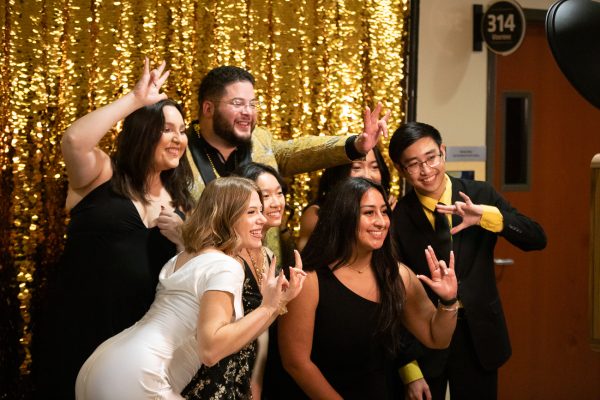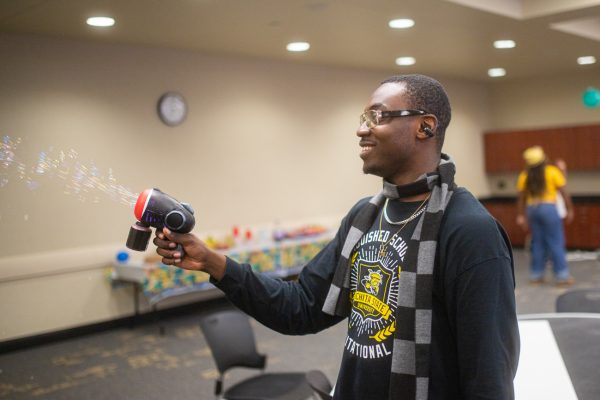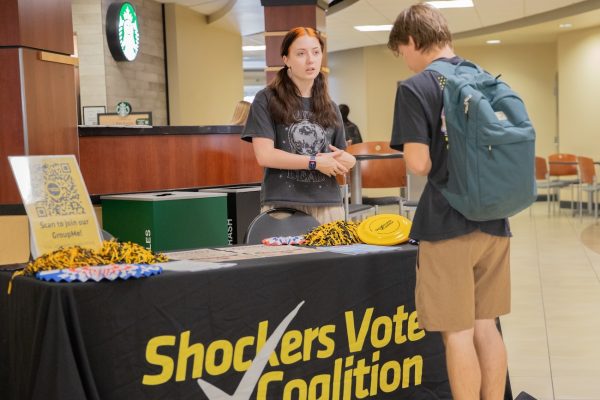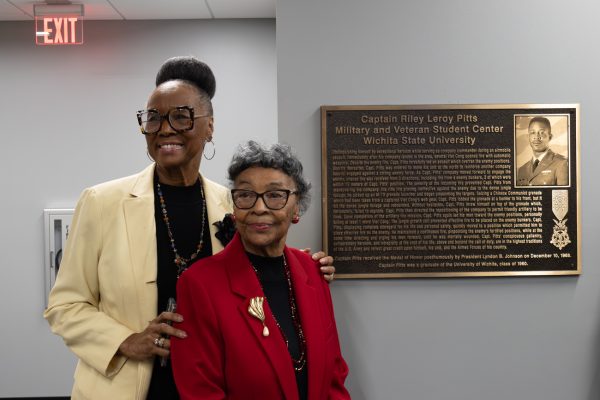Bardo announces building plans for Innovation Campus
In President John Bardo’s eyes, innovation is not a new concept on the Wichita State University campus.
“This is who we are,” Bardo said to an audience Friday afternoon. “This is where we’ve been.”
Bardo addressed a curious audience Friday afternoon to announce plans for the university’s Innovation Campus, which will include about a dozen new buildings, including a parking garage, residence hall, new business hall and other experimental research buildings.
The presentation included a video, a visual rendering of Innovation Campus that floated from building to building, offering different perspectives of the campus. Audience members smiles, nodded, as if in awe.
The goal, Bardo said, is to keep Wichita and south central Kansas globally competitive.
“Technology has changed the way we do things. The way we think about things,” Bardo said to members of the media Friday. “What we’re looking to do is make sure we harness that technology for the good of the people of this region.”
A parking garage — which will be adjacent to the Rhatigan Student Center and include space for 600 vehicles — and a residence hall will be funded by users, Bardo said, meaning students.
Parking garage construction is scheduled to begin in 2016 and the residence hall in 2017.
An Innovation Center will connect to the residence hall through an overhead tunnel, Bardo said, and will be funded with a general student fee.
Bardo’s plans also include a hotel at 21st and Oliver for business guests, and restaurants, apartments and retail space will line 17th Street. These buildings, and the rest of Innovation Campus, will be paid for by the private sector and non-student-based funding.
Wheatshocker Apartments will go down in October, Bardo said, with work on the first building, the Experiential Engineering Building, beginning in January. It will have no classrooms, only engineering space, and will cost $43 million.
But other departments on campus will also be able to benefit from the facilities, he said, besides just engineering. Anybody with an idea — whether it be from the community or from the university — can come to Innovation Campus to do research.
“This isn’t just about engineering,” Bardo said. “It’s about coming together as a university.”
Innovation Campus is Bardo’s solution to the so-called “commuter school.”
“When you call a university a ‘commuter school’ you’re calling it a bad name,” he said to media. “Commuter school means people will only go there because it’s local and they couldn’t go anywhere else. Wichita State University is a major research university in an urban area, and therefore it has a substantial number of commuters.
“But it is not a commuter school…It’s really important that we on campus change our logic, but it’s equally important that we as a community change logic because the expectations are quite different.”
Enrollment has seen an increase Bardo said, with the freshman class 19 percent larger than it was last year. With that comment, the audience gave a large cheer on Friday.
The idea of innovation and research is not a new one to Bardo. He said it’s been around since the 1970’s when he was an assistant professor at WSU. John Tomblin would agree.
“We have a great innovation ecosystem,” said Tomblin, vice president for Research and Technology Transfer and executive director of the National Institute for Aviation Research. “We just don’t connect the dots…Think of this as the one-stop of innovation”







